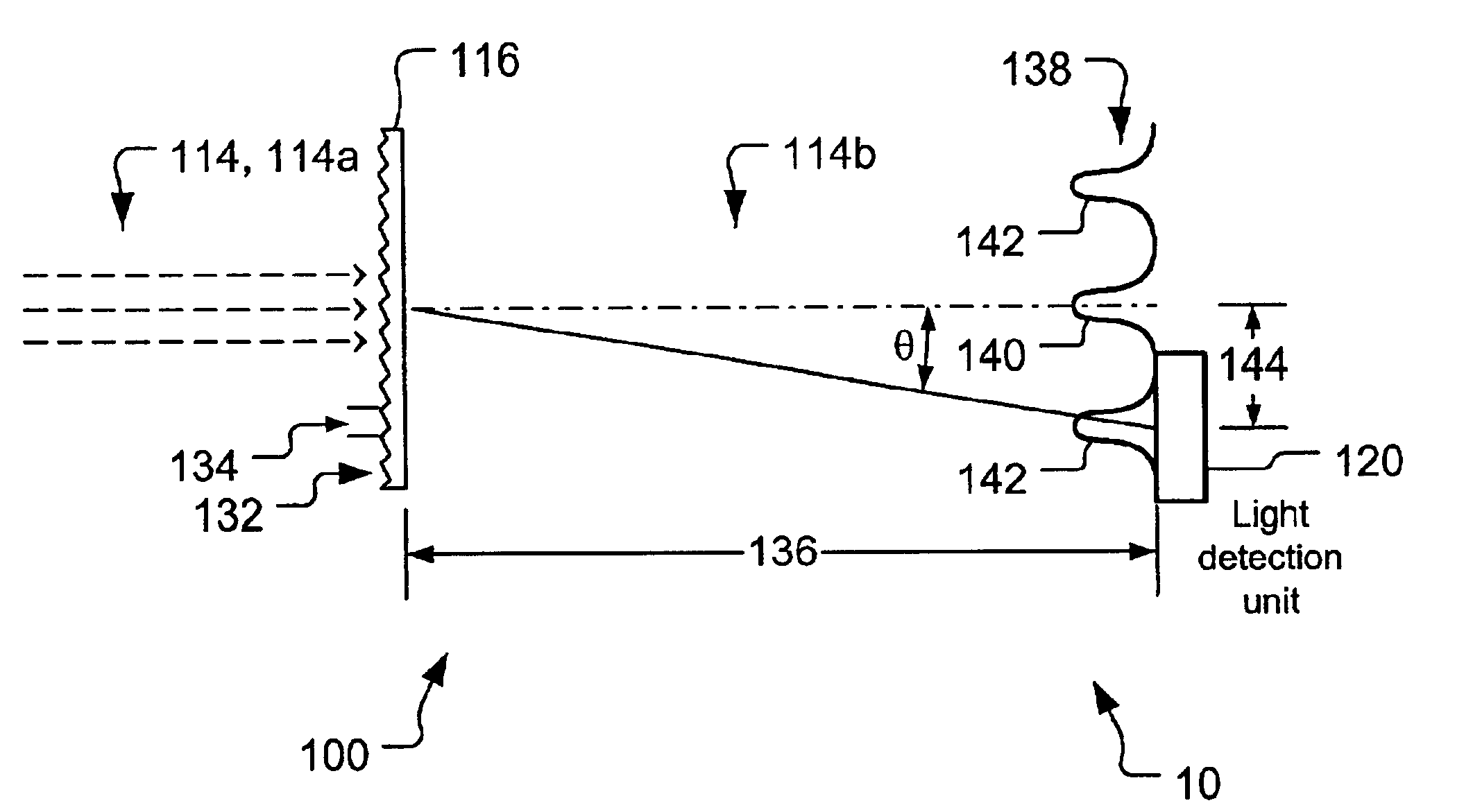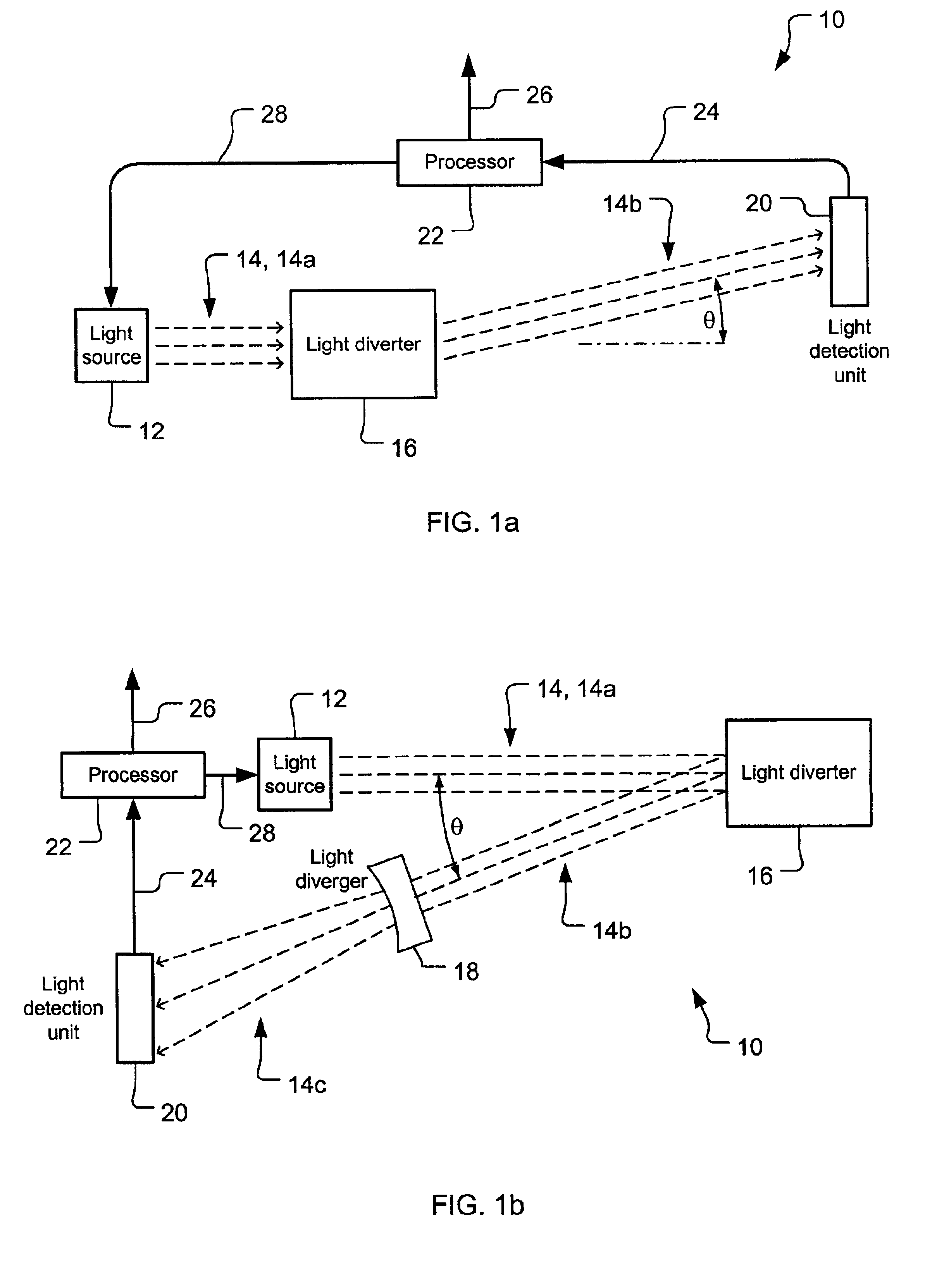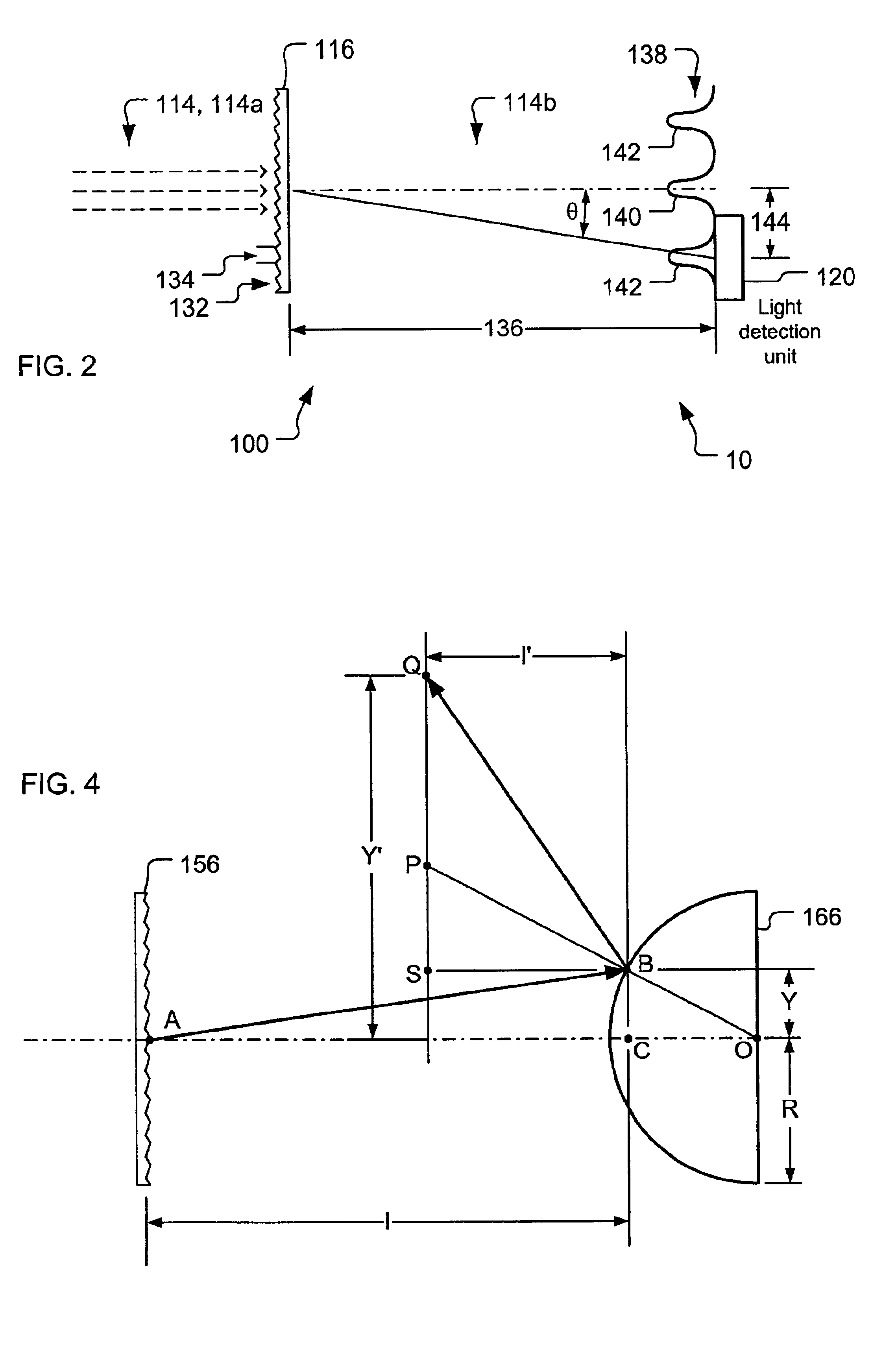Light wavelength meter
a wavelength meter and light technology, applied in the field of light wavelength meter, can solve the problems of complex operation principle, limited measurement resolution of other systems, and difficult to set-up and maintain, and achieve the effect of simple and economical, low cost of wavelength meter, and easy setup and maintenan
- Summary
- Abstract
- Description
- Claims
- Application Information
AI Technical Summary
Benefits of technology
Problems solved by technology
Method used
Image
Examples
embodiment 300
FIG. 7 is a block diagram presenting a multiple slit embodiment 300 of the inventive wavelength meter 10. A light source (not shown) produces a light beam 314, having a first beam portion 314a and a second beam portion 314b. The first beam portion 314a is received at a slit plate 316 (serving here as a transmissive light diverter) which imparts to the second beam portion 314b a transverse displacement characteristic. The second beam portion 314b is, in turn, received by a diverging lens 318 (used as a light diverger for angular resolution extension here) and produces a third beam portion 314c. A light detection unit 320 then detects aspects of the transverse displacement in the third beam portion 314c and produces a raw signal which is representative thereof. With techniques and components described elsewhere herein, this raw signal can then be appropriately processed to meter the wavelength or lock the frequency in the light beam 314.
Aside from the alternate type of light diverter ...
embodiment 400
FIG. 8 is a block diagram presenting an acousto-optical embodiment 400 of the inventive wavelength meter 10. A light source (not shown) produces a light beam 414, having a first beam portion 414a and a second beam portion 414b. The first beam portion 414a is received at an acousto-optical unit 416 (serving here as a transmissive light diverter) which imparts to the second beam portion 414b a transverse displacement characteristic. A light detection unit 420 then detects aspects of the transverse displacement in the second beam portion 414b and produces a raw signal which is representative thereof. With techniques and components described elsewhere herein, this raw signal can then be appropriately processed to meter the wavelength or lock the frequency in the light beam 414.
The acousto-optical unit 416 includes an acousto-optic crystal, such as LiNbO3, ADP, KDP, etc. In the acousto-optic crystal the light beam 414 is modulated by interaction with sound waves, typically created by a p...
PUM
 Login to View More
Login to View More Abstract
Description
Claims
Application Information
 Login to View More
Login to View More - R&D
- Intellectual Property
- Life Sciences
- Materials
- Tech Scout
- Unparalleled Data Quality
- Higher Quality Content
- 60% Fewer Hallucinations
Browse by: Latest US Patents, China's latest patents, Technical Efficacy Thesaurus, Application Domain, Technology Topic, Popular Technical Reports.
© 2025 PatSnap. All rights reserved.Legal|Privacy policy|Modern Slavery Act Transparency Statement|Sitemap|About US| Contact US: help@patsnap.com



